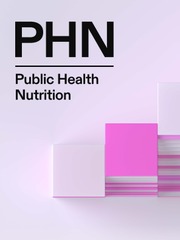No CrossRef data available.
Article contents
How expensive is a healthy diet in Europe? Using Linear Programming as a standardised method for calculating European Food Reference Budgets
Published online by Cambridge University Press: 03 November 2025
Abstract
According to the principles of the European Pillar of Social Rights, everyone should be entitled to an adequate minimum income sufficient for a healthy diet. Studies show that food insecurity remains a concern in Europe, highlighting the need to determine budgets for adequate nutrition, known as Food Reference Budgets. Previous approaches, based on expert-designed Food Baskets or focus group discussions, are often limited by their normative nature and/or low representativeness.
To address these problems, this study explores Linear Programming as a novel method to calculate Food Reference Budgets for 26 EU member states. To analyse if Linear Programming could be an adequate tool to calculate future Food Reference Budgets, this method was used to design country-specific food baskets that align with consumption habits and healthy diet requirements. The food baskets were then priced at different levels to determine the cost for healthy diets in 26 European Countries.
Germany
/
The results show a positive correlation between optimised healthy and current observed diets for most food groups, indicating that country-specific preferences are reflected in the optimised healthy food baskets. Nevertheless, to meet healthy diet requirements, consumption of vegetables, fruit, fish, and dairy must increase compared to the current observed diets.
At a lower price level, the Food Reference Budgets ranged from 2.38 to 5.71 €/day, depending on the country. With a low-price level (20th percentile), costs for healthy diet accounted for between 5.74 % of income in Luxembourg and 29.00 % in Romania, showing the large differences in affordability between countries.
Overall, it was concluded that Linear Programming could be a promising approach for determining uniform and comparable European Food Reference Budgets and should be discussed in the context of the EU Commission’s efforts to modernise the European minimum income schemes.
Information
- Type
- Research Paper
- Information
- Creative Commons
- This is an Open Access article, distributed under the terms of the Creative Commons Attribution licence (http://creativecommons.org/licenses/by/4.0/), which permits unrestricted re-use, distribution and reproduction, provided the original article is properly cited.
- Copyright
- © The Author(s), 2025. Published by Cambridge University Press on behalf of The Nutrition Society

